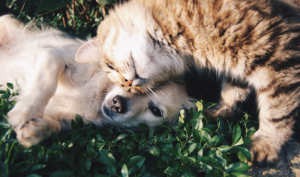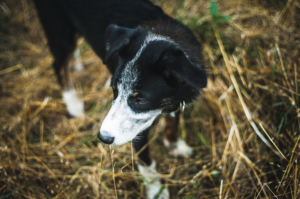
Pitbull Breeds 101: Exploring the Unique Traits and Commonalities
Pitbull breeds are a group of dog breeds that are known for their muscular build and strong jaws. They are often misunderstood and have gained a reputation for being aggressive and dangerous. However, this reputation is largely unfounded and stems from the fact that Pitbull breeds have been used in illegal activities such as dogfighting. In reality, Pitbull breeds can make wonderful pets and are known for their loyalty, affection, and protectiveness.
Despite their controversial reputation, Pitbull breeds remain popular as pets. Many people are drawn to their striking appearance and their reputation as loyal and protective companions. However, it is important to note that owning a Pitbull breed comes with certain responsibilities. They require proper training, socialization, and exercise to ensure they grow up to be well-behaved and happy dogs.
History of Pitbull Breeds 101
The history of Pitbull breeds dates back several centuries. They were originally bred in England for activities such as bull-baiting and bear-baiting. These sports involved pitting dogs against large animals in a fight to the death. The dogs used in these activities were strong, agile, and had a high pain tolerance.
In the 19th century, these blood sports were banned in England, and Pitbull breeds were no longer needed for these activities. However, they found a new purpose as working dogs on farms and as companions for families. Their loyalty, intelligence, and strength made them well-suited for these roles.
Over time, Pitbull breeds evolved into the companion animals we know today. They became popular in the United States, where they were used as farm dogs, guard dogs, and family pets. Despite their changing roles, Pitbull breeds retained their physical characteristics and temperament traits that made them successful in their original roles.
Physical Characteristics of Pitbull Breeds 101
Pitbull breeds are medium-sized dogs with a muscular build and a strong jaw. They have a short coat that can come in a variety of colors, including brindle, black, and white. The most common Pitbull breeds include the American Pit Bull Terrier and the Staffordshire Bull Terrier.
The American Pit Bull Terrier is a stocky and muscular dog with a broad head and strong jaws. They have a short coat that is easy to maintain. They typically weigh between 30 to 60 pounds and stand around 17 to 21 inches tall at the shoulder.
The Staffordshire Bull Terrier is slightly smaller than the American Pit Bull Terrier. They have a similar muscular build and strong jaws. They also have a short coat that comes in various colors. Staffordshire Bull Terriers typically weigh between 24 to 38 pounds and stand around 14 to 16 inches tall at the shoulder.
Temperament and Personality Traits of Pitbull Breeds 101
Contrary to popular belief, Pitbull breeds are not inherently aggressive or dangerous. In fact, they are known for their loyalty, affection, and protectiveness towards their families. They are often described as “nanny dogs” because of their gentle and patient nature with children.
Pitbull breeds are highly intelligent and eager to please their owners. With proper training and socialization, they can be well-behaved and obedient dogs. They thrive on positive reinforcement training methods and enjoy learning new tricks and commands.
It is important to note that any dog, regardless of breed, can exhibit aggressive behavior if they are not properly trained or socialized. It is unfair to label an entire breed as aggressive based on the actions of a few individuals. Responsible ownership and proper training are key to raising a well-behaved Pitbull breed.
Training and Exercise Requirements for Pitbull Breeds 101
Training and socialization are crucial for Pitbull breeds to ensure they grow up to be well-behaved and happy dogs. They are highly trainable and eager to please their owners, making them a joy to train. Positive reinforcement methods, such as rewards and praise, work best with Pitbull breeds.
Socialization is also important for Pitbull breeds to ensure they are comfortable and well-behaved around other dogs and people. Exposing them to different environments, sounds, and experiences from a young age will help them become confident and well-adjusted adults.
In addition to training, Pitbull breeds require regular exercise to maintain their physical and mental health. They are active dogs that enjoy activities such as walking, running, and playing fetch. A tired Pitbull is a happy Pitbull, so it is important to provide them with plenty of opportunities for exercise.
Health Issues and Concerns for Pitbull Breeds
Like all dog breeds, Pitbull breeds are prone to certain health issues. Some common health issues that Pitbull breeds may face include hip dysplasia, skin allergies, and certain types of cancer. It is important to be aware of these potential health issues and take steps to prevent or manage them.
Regular veterinary check-ups are essential for monitoring the health of Pitbull breeds. Vaccinations, parasite prevention, and dental care are all important aspects of their overall health care. Maintaining a healthy diet and providing regular exercise can also help prevent obesity, which can lead to other health problems.
It is worth noting that not all Pitbull breeds will experience these health issues. Responsible breeders will conduct health screenings on their breeding dogs to ensure they are not passing on any genetic health conditions to their offspring. When adopting a Pitbull breed from a shelter or rescue organization, it is important to ask about the dog’s medical history and any known health issues.
Common Misconceptions about Pitbull Breeds
Pitbull breeds have been the subject of many misconceptions and stereotypes over the years. One of the most common misconceptions is that Pitbull breeds are inherently aggressive and dangerous. This is simply not true. Like any dog, their behavior is largely influenced by their upbringing, training, and socialization.
Another misconception is that Pitbull breeds have a “locking jaw” or a stronger bite force than other dog breeds. This is also false. The structure of a dog’s jaw is the same across all breeds, and there is no scientific evidence to support the idea of a “locking jaw” in Pitbull breeds.
It is important to remember that every dog is an individual and should be judged based on their own behavior and temperament, rather than stereotypes or generalizations about their breed. Responsible ownership and proper training are key to raising a well-behaved and happy Pitbull breed.
Legal Issues and Breed-Specific Legislation for Pitbull Breeds
Pitbull breeds have been the subject of breed-specific legislation (BSL) in many countries and cities around the world. BSL refers to laws and regulations that target specific dog breeds based on their appearance rather than their behavior or temperament.
These laws often require Pitbull breeds to be muzzled in public, kept on a leash at all times, or even banned outright. However, there is no scientific evidence to support the effectiveness of BSL in reducing dog bites or improving public safety. In fact, many experts argue that BSL is ineffective and unfair, as it punishes responsible owners and well-behaved dogs based solely on their breed.
It is important for Pitbull breed owners to be aware of any breed-specific legislation in their area and to advocate for fair and effective dog laws that focus on responsible ownership and education rather than targeting specific breeds.
Differences between American Pit Bull Terrier and Staffordshire Bull Terrier
While both the American Pit Bull Terrier and the Staffordshire Bull Terrier are considered Pitbull breeds, there are some key differences between the two.
The American Pit Bull Terrier is a larger and more muscular breed compared to the Staffordshire Bull Terrier. They have a broader head and a more powerful build. American Pit Bull Terriers are known for their strength and athleticism, making them well-suited for activities such as weight pulling and agility.
On the other hand, the Staffordshire Bull Terrier is slightly smaller and more compact. They have a more balanced and agile build. Staffordshire Bull Terriers are known for their friendly and outgoing nature, making them excellent family pets.
Both breeds share many similarities in terms of temperament and personality traits. They are both loyal, affectionate, and protective of their families. They require similar training and exercise needs to ensure they grow up to be well-behaved and happy dogs.
Similarities between Pitbull Breeds and Other Terrier Breeds
Pitbull breeds share many similarities with other terrier breeds. They are both known for their high energy levels, intelligence, and loyalty. Terriers, including Pitbull breeds, were originally bred for hunting small game such as rats and foxes. This has resulted in a group of breeds that are highly active, intelligent, and independent.
Like other terrier breeds, Pitbull breeds require regular exercise to keep them physically and mentally stimulated. They enjoy activities such as walking, running, and playing fetch. They also thrive on mental stimulation through training and puzzle toys.
Terriers are known for their loyalty and devotion to their families. They form strong bonds with their owners and are often described as “velcro dogs” because they like to be close to their humans at all times. This loyalty makes them excellent family pets.
Choosing the Right Pitbull Breed 101 for Your Lifestyle and Family
When considering a Pitbull breed as a pet, it is important to choose the right breed that suits your lifestyle and family dynamics. Factors to consider include your living situation, activity level, and experience with dog ownership.
If you live in an apartment or have limited space, a smaller breed like the Staffordshire Bull Terrier may be a better fit. They are more compact and require less exercise compared to the American Pit Bull Terrier.
If you have an active lifestyle and enjoy outdoor activities, the American Pit Bull Terrier may be a better choice. They are more athletic and require more exercise to keep them physically and mentally stimulated.
It is also important to consider your experience with dog ownership. Pitbull breeds are intelligent and strong-willed, so they require an owner who is confident and experienced in handling strong dogs. If you are a first-time dog owner, it may be beneficial to seek guidance from a professional dog trainer or behaviorist.
When choosing a Pitbull breed, it is important to find a reputable breeder or consider adopting from a shelter or rescue organization. Reputable breeders will conduct health screenings on their breeding dogs and provide proper socialization for their puppies. Shelters and rescue organizations often have Pitbull breeds available for adoption, providing an opportunity to give a loving home to a dog in need. Pitbull and husky bread is also a perfect hybrid breed for a family, read here.
Conclusion:
Pitbull breeds are often misunderstood and have gained a reputation for being aggressive and dangerous. However, this reputation is largely unfounded. Pitbull breeds can make wonderful pets and are known for their loyalty, affection, and protectiveness.
It is important to remember that responsible ownership and proper training are key to raising a well-behaved and happy Pitbull breed. With the right care and attention, Pitbull breeds can thrive as loving and loyal companions. So, if you are considering adding a new furry friend to your family, don’t overlook the potential of a Pitbull breed. They may just be the perfect addition to your home.





